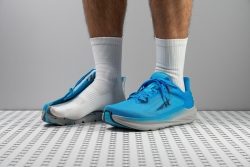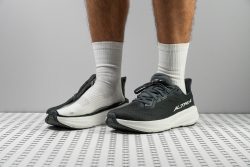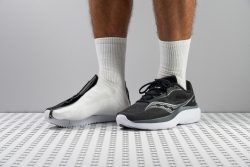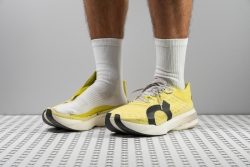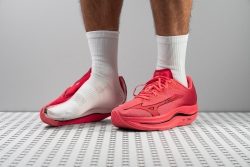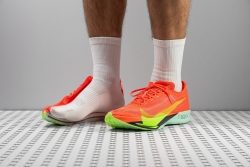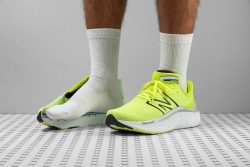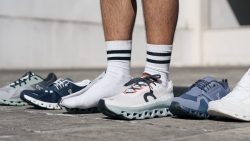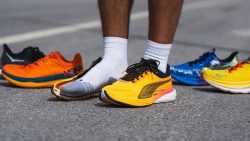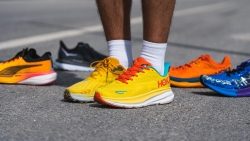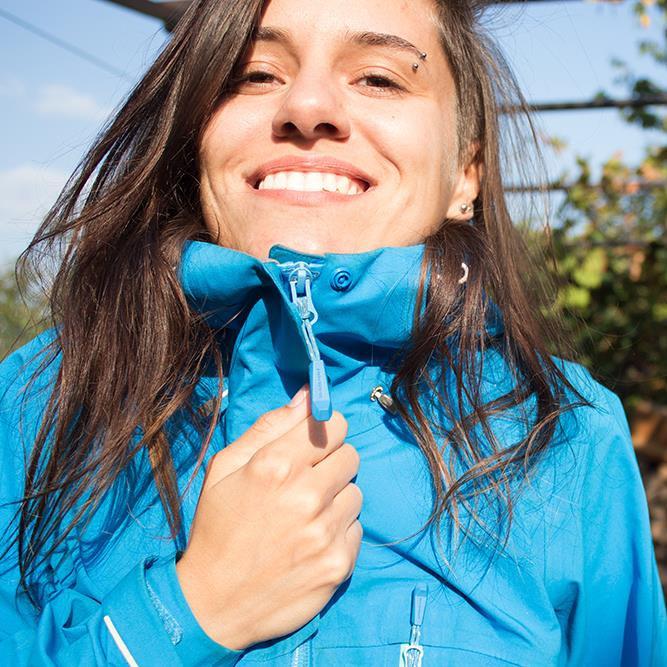7 Best Low Drop Running Shoes in 2025
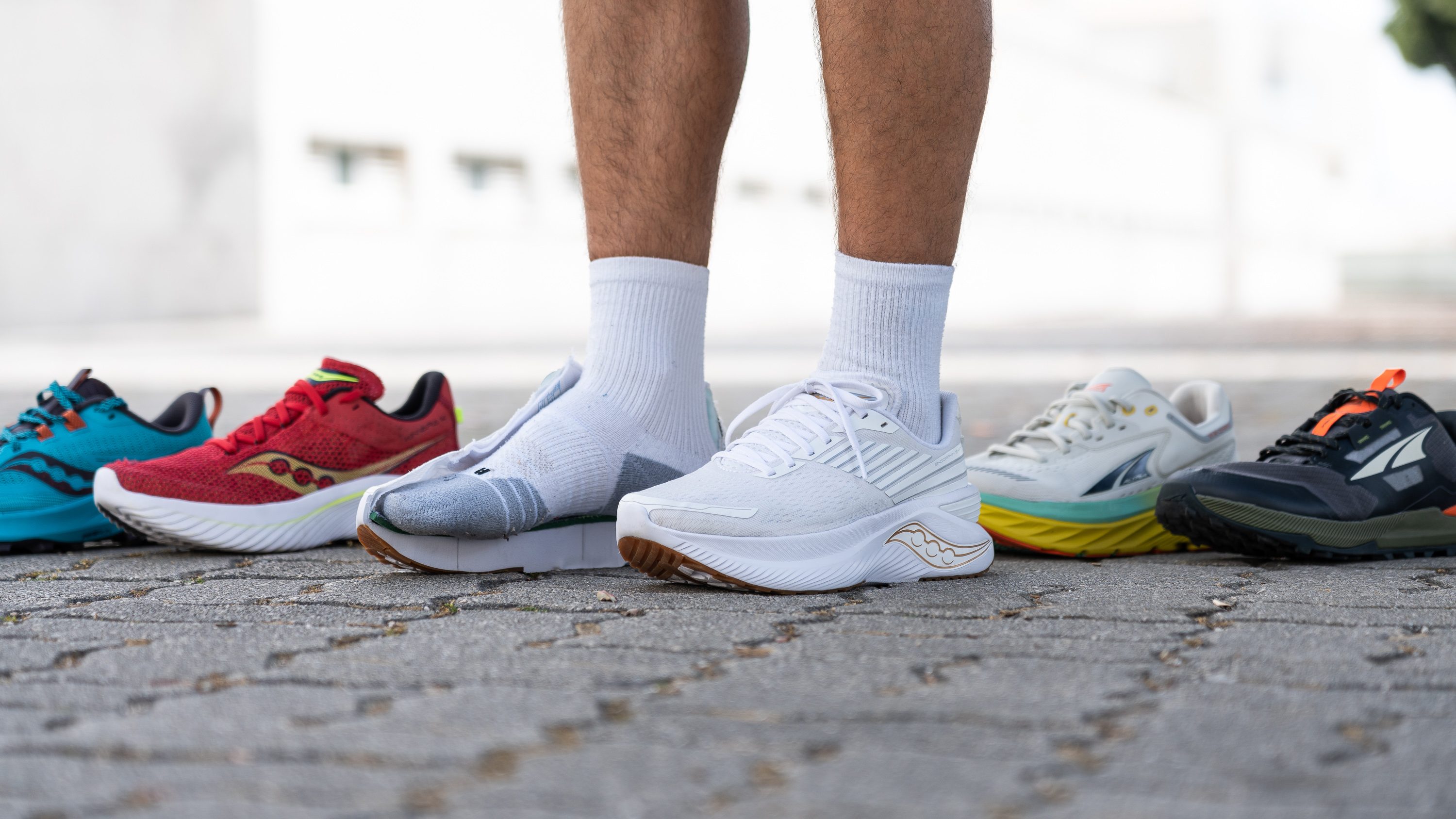
We buy shoes ourselves. We earn commissions when you buy through us, at no extra cost. Why trust us
The “drop” in road or trail running shoes refers to the difference in height between the forefoot (or toe box) and the heel section. The higher the drop in a shoe, the steeper the angle between the forefoot and the heel.
Low-drop running shoes promote a more ‘natural’ gait. Their overall construction is also a great choice for forefoot and midfoot strikers. This low drop utilises the lower leg muscles, like achilles and calves. If close to zero, it utilises the foot muscles the most. Because of this, it's important to be cautious when transitioning to low-drop shoes. We wrote all about it in this guide.
We tested many zero-drop shoes in our lab and on the test runs and picked a few top picks that really deserve all the spotlight. We showcase them here.
How we test low drop running shoes
Here at RunRepeat, we make the lives of other runners easier and more fun. We do in-depth research and tests to suggest the best low-drop running shoes that suit your training and racing needs.
Here’s our following process:
- We purchase all the low-drop running shoes on this list with our own funds. This is for the sake of transparency and freedom from bias.
- We cut the shoes into pieces to get accurate measurements of the stack and heel drop, energy return, shock absorption, outsole thickness, flexibility, platform width, and over 30 other parameters.
- We give our feedback after multiple runs in each model.
Best low drop running shoes overall
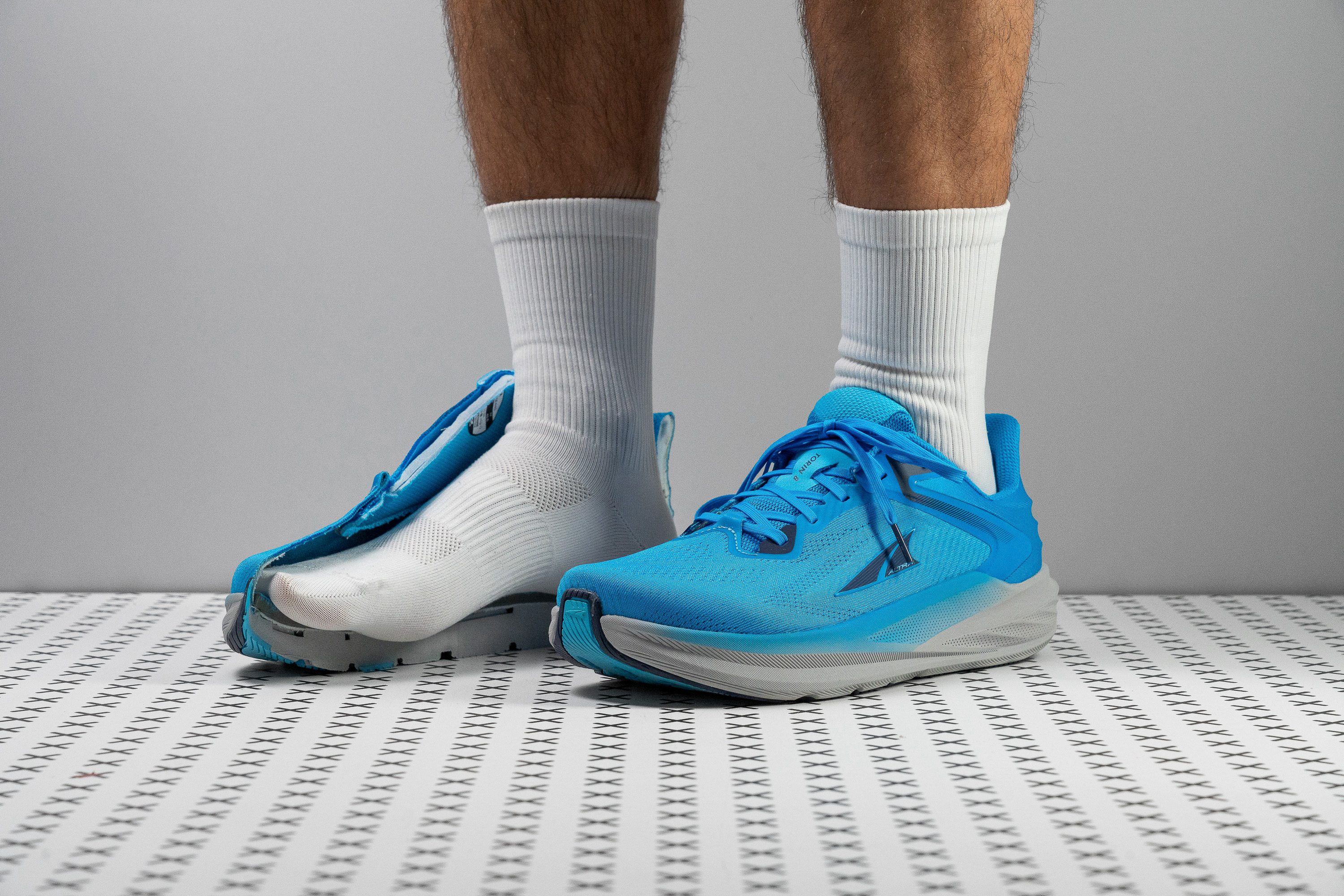

















































What makes it the best?
The Altra Torin 8 offers unwavering confidence and ease, making it the ultimate choice for low-drop running. Our lab results back up the sensation we felt: the zero-drop midsole offers a feedback-rich ride without compromising impact protection. Meanwhile, its grippy and durable outsole keeps us chasing more miles.
With an actual negative heel drop of -0.1 mm, it fosters a natural feel and exceptional control, ensuring solid ground contact with every step. The cushioning offers a well-balanced sensation, which our durometer confirms with a 21.0 HA reading.
The shoe has wide dimensions in its forefoot, making it suitable for runners who strike at the front. Our calliper confirms it’s 117.7 mm vs. the 114.1 mm average, offering extra room to land securely. The toebox also features a foot-friendly design, backed up by our gel replica’s big toe measurement: 83.6 mm vs. the 73.7 mm average!
In terms of grip, we have no complaints as we had no instances of slipping. Meanwhile, the rubber bravely resisted our high-speed Dremel and only received a minimal 0.8 mm damage, cementing its durability.
However, the midsole lacks energy return and will bore those seeking a thrilling ride. We recommend checking other options for tempo or interval runs.
Pros
- True zero-drop midsole
- Foot-shaped, wide toebox
- Excellent durability
- Improved heel lockdown
- Plush step-in comfort
- Keeps the same price
- Can be used for walking
- Amazing for forefoot strikers
- Improved outsole
- Stable
Cons
- Weight gain compared to v7
- Not for rearfoot strikers
- Needs a better foam ASAP
- Non-gusseted tongue
Best low-drop daily running shoes
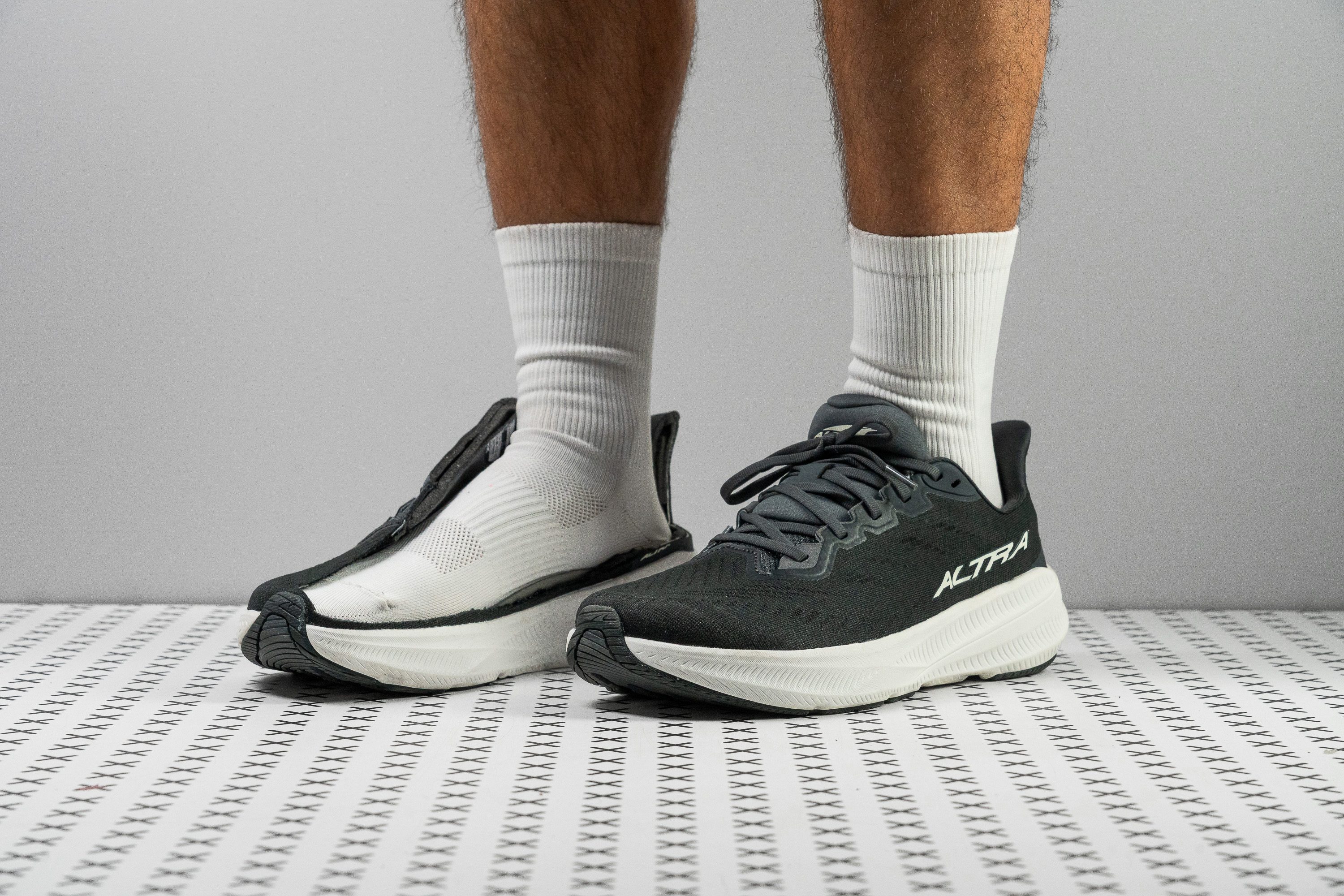












































What makes it the best?
The Altra Experience Flow 2 offers a fuss-free experience that allows us to keep running mindlessly. With a seamless blend of natural feel and forgiving fit in a lightweight yet energetic package, it’s our top daily trainer among low-drop running shoes we tested in the lab. With a slight 4.4 mm offset, we believe it's a great shoe to try before deep-diving into the zero-drop world.
The midsole truly enhanced smooth, free-flowing strides with its flexible build. Our 30-degree bend test shows it's 34.2% more adaptive than average, making it versatile and comfortable enough for any pace. With high energy return scores of 60.3% in the heel and 68.1% in the forefoot, this trainer feels far from lifeless and allows us to pick up the speed when we want to.
In addition, its light build adds to our agility. Our scales reveal it’s only 8.3 oz (235g), 11.3% below average, making it easy to bring around.
The toebox feels kind to even those of us with broad feet, ensuring our toes won’t have any unwanted pressure. We used our solidified gel mould to measure the shoe’s interiors and confirmed its generous width of 82.6 mm vs. the 73.3 mm average. With lots of extra room, even swollen feet won’t feel cramped, making it comfortable for long distances.
Unfortunately, the outsole immediately surrendered to our Dremel. Experience Flow 2 isn’t the ideal shoe for those seeking a durable and long-lasting shoe.
Pros
- Good energy return (finally!)
- Roomy, foot-shaped toebox
- Feather-light build
- Smooth, natural ride
- New plush EGO P35 foam
- Perfect bridge toward zero-drop shoes
- Comfortable for daily wear
- Flexible build
- Massive improvement over v1
Cons
- Poor outsole durability
- Not ideal for heel strikers
- Toebox height may feel slightly low
Best low-drop shoes for tempo workouts
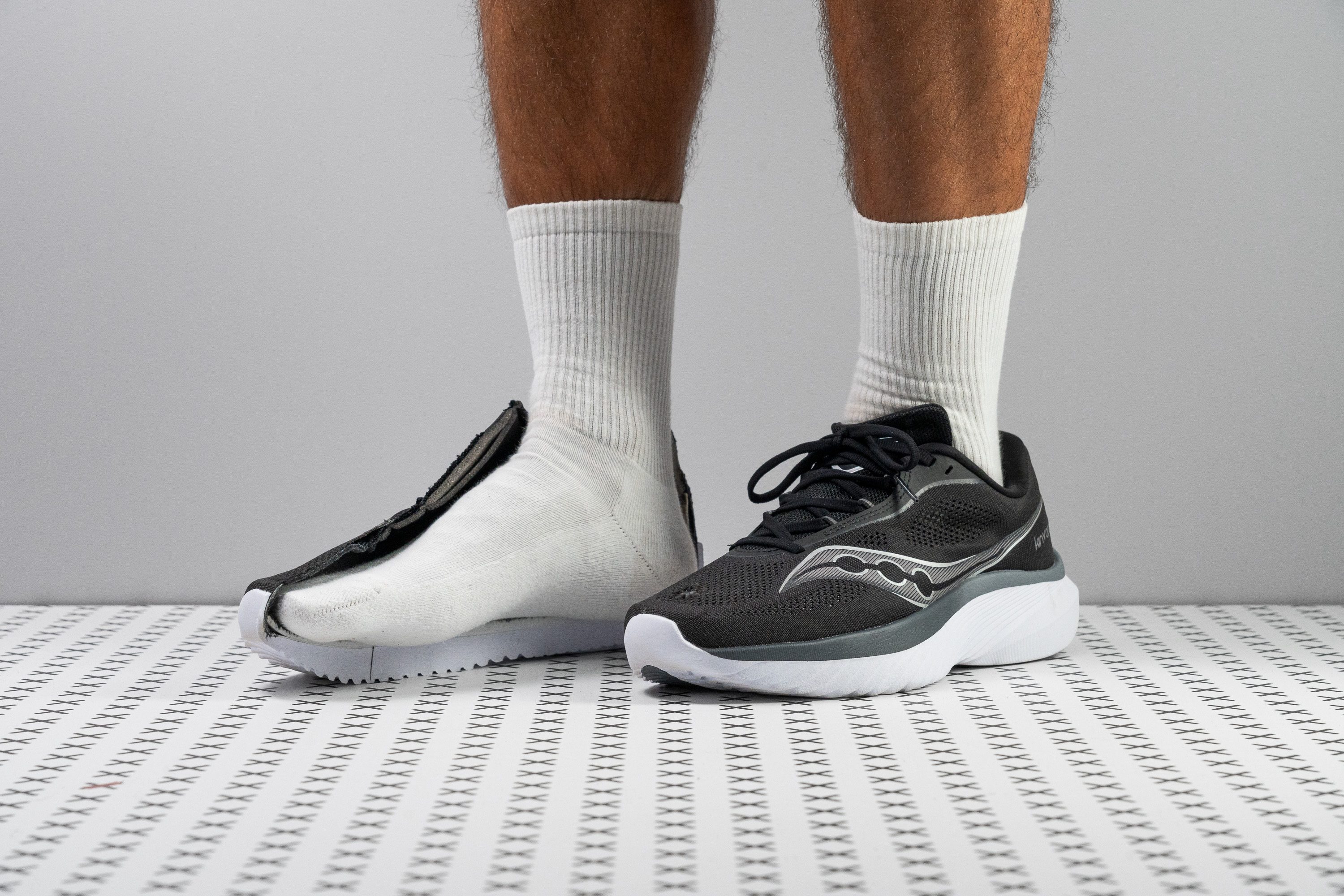

























































What makes it the best?
Saucony’s Kinvara 15 is our best low-drop speed trainer because of its featherlight, nimble, and perfectly natural ride. Proven by countless tests in the lab, its minimal cushion, flexible midsole, and light nature kept the experience as effortless as possible.
With a heel-to-toe drop of 4.4 mm, the platform is 48.8% less inclined than the average of lab-tested shoes. This promotes a natural and relaxed running feel since it isn’t too aggressive. Though the heel and forefoot stacks remain below average, the delightfully firm 23.8 HA cushion protects us from leg strain and unstable strides.
Less cushioning means more flexibility, and the midsole confirms this with easy manoeuvrability, keeping us as the main driver of our runs. It freely adapts to our movements. The numbers don't lie, and our flex test validates it's 39.3% more bendable than average.
What’s incredible is how airy this shoe feels in our runs. This speed trainer is even lighter than other race shoes! Weighing only 6.8 oz (194g), it’s 26.8% lighter than the average running shoe.
Unfortunately, this isn’t the most durable shoe. With a softer and thinner outsole than average, the rubber is more vulnerable to wear and tear.
Pros
- Easy on the wallet
- Feels great at faster paces
- Really fun
- Retains classic Kinvara vibes
- Stable, low-to-the-ground ride
- Suitable for daily wear
- Exceptionally lightweight
- Enhances foot strength
- Top-notch breathability
Cons
- Limited to short runs
- Not ideal for heel strikers
- Toebox durability
- Minimal outsole rubber coverage
Best low-drop shoes for running a marathon
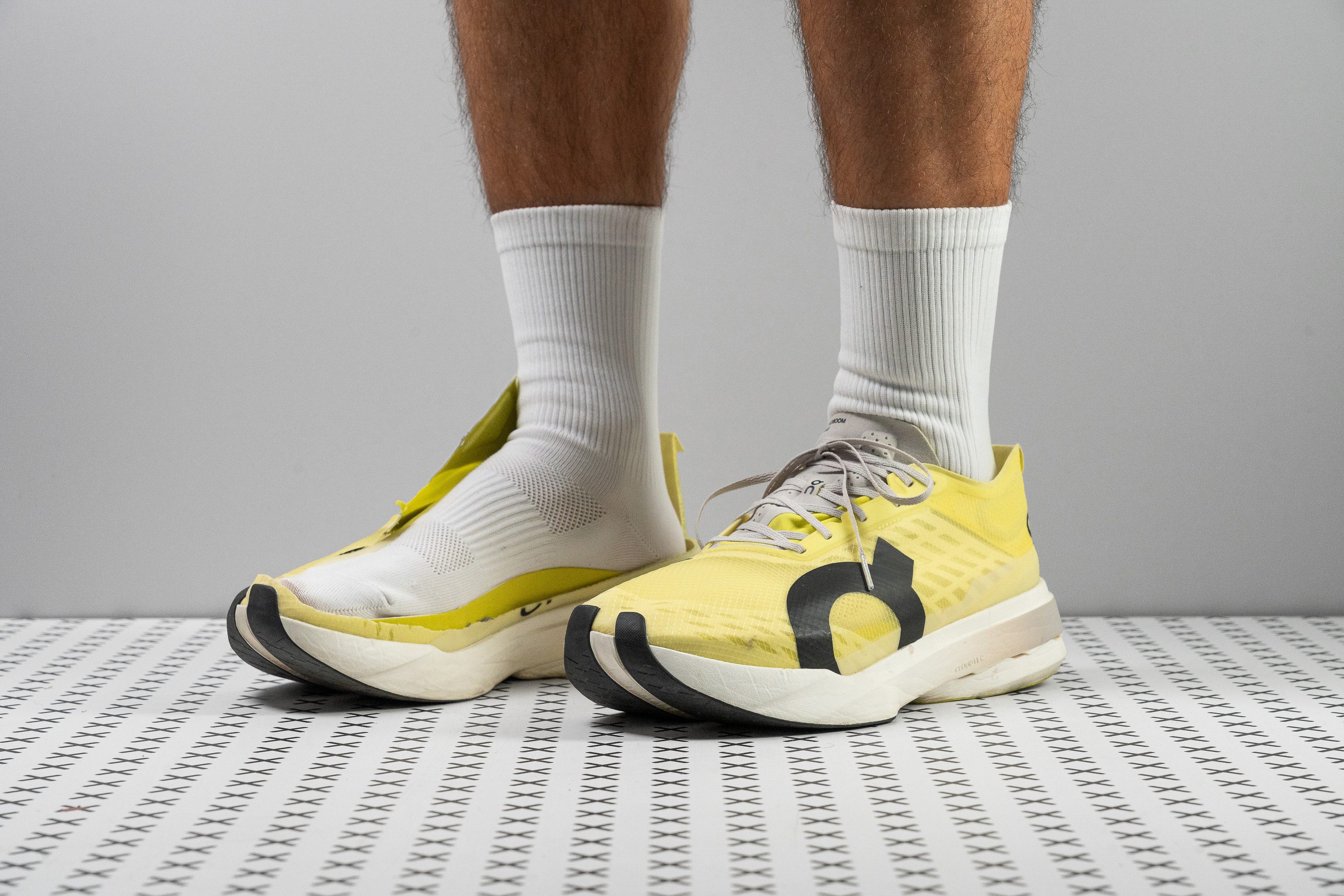














































What makes it the best?
With the lab and the streets as our witnesses, the On Cloudboom Strike is our ultimate low-drop marathon running shoe. We blazed through gruelling miles without the burning feeling with its superior combination of blissful comfort and insane midsole responsiveness. This lightweight marvel delivers nothing but peak performance in our runs.
With a 38.1/34.9 mm stack height, we savoured the extra cushioning in our runs, notably in the forefoot. For context, the average in our lab is only 25.9 mm. The minimal 3.2 mm offset promotes landing on the front half of our foot, which is why we appreciated its high impact protection, proven by its solid 127 SA rating in the forefoot. It really made a difference as we inched closer to the 26-mile mark.
Despite its height, Cloudboom Strike is one of the lightest we’ve seen at only 7.1 oz (201g)! Its airiness comes from the Helion HF foam, offering a wildly electric experience. Testing for its energy return, we recorded a massive 73.4% in the forefoot.
However, its tall and plush nature makes it less stable. Marathoners seeking a relaxed yet controlled sensation should go for a more supportive shoe.
Pros
- Exceptional energy return
- Outstanding shock absorption
- Lightweight for its high stack
- Roomier fit than previous model
- Excellent traction
- Innovative Pebax insole/midsole design
- Perfect for forefoot strikers
- Premium-quality materials
- Handles anything from 5K to marathons
- Generous rubber coverage
Cons
- Potential heel slippage
- Not for heel strikers
- A bit expensive
- Limited stability
Low drop running shoes with the best shock absorption
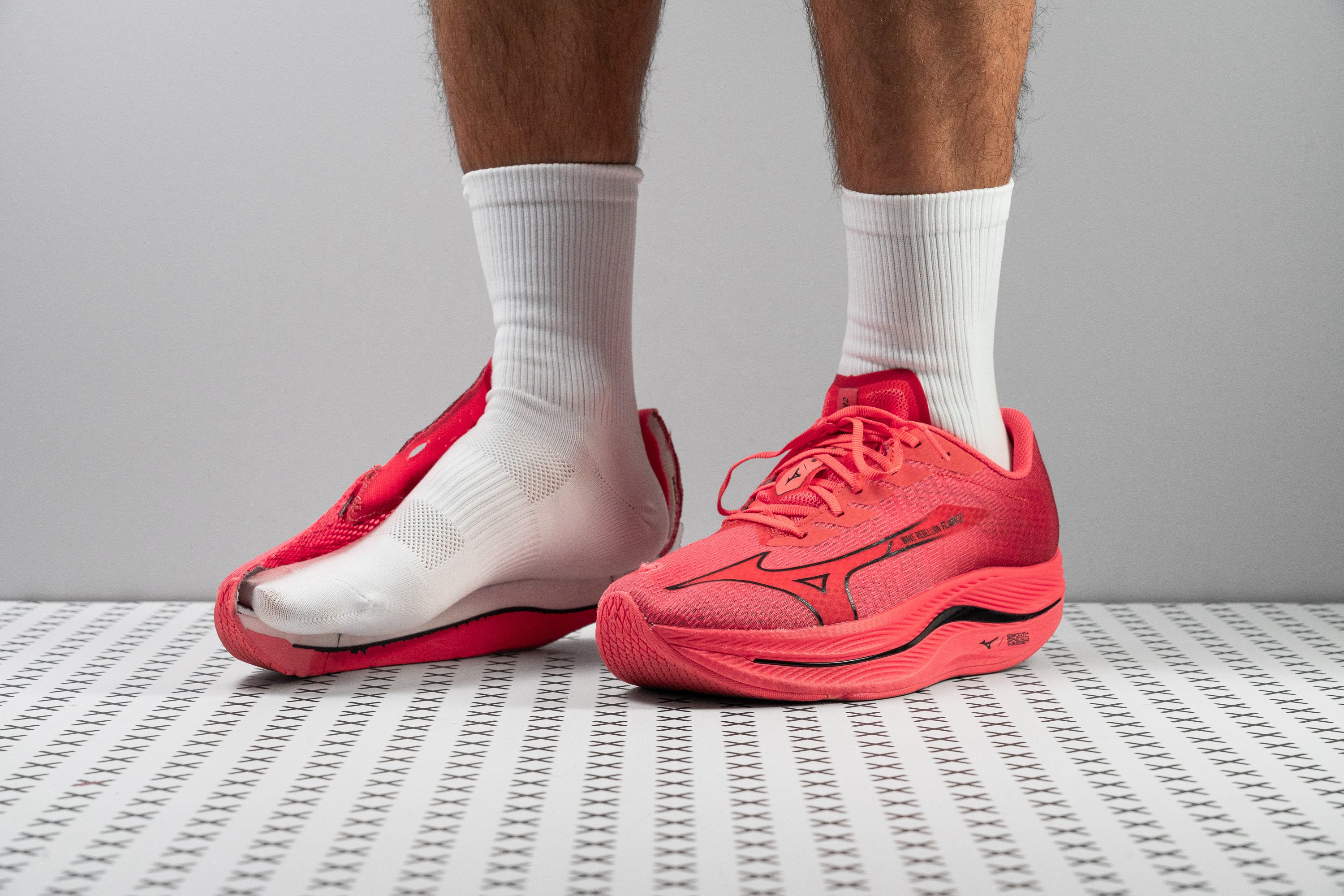


















































What makes it the best?
In our runs and lab analysis with low-drop running shoes, the Mizuno Wave Rebellion Flash 2 championed shock absorption. Its unique design caters to forefoot and midfoot strikers looking for speed and lightness without the discomfort of tired legs.
Our toe-offs feel electric, backed up by their high energy return of 59.6% in the forefoot. But what we loved the most is its exceptional impact protection, scoring a high 148 SA vs. the 127 SA average, which proves WRF2’s superior shock absorption.
Measuring the heel drop, we got a low 2.9 mm reading. But because of its elevated midfoot, it feels more natural in terms of forward transitions for midfoot strikers.
The Wave Plate nestled in the midsole adds responsiveness but keeps the ride forgiving. It doesn’t restrict foot-bending the way carbon-plated shoes do, proven by its near-average 15.8N flexibility result.
In addition, its low 8.4 oz (239g) build feels easy on the feet and prevents early fatigue, allowing us to push faster and farther during training sessions.
However, its ventilation score is a subpar 3/5. Those training in warmer weather should look for at least a 4/5 score in our breathability test.
Pros
- Unique rockered geometry delivers a fun ride
- Fantastic choice for midfoot strikers
- Fibreglass plate balances flex and propulsion
- Good fit for most feet
- High-stack forefoot for cushioned landings
- Reflective details enhance safety at night
- Can handle workouts and daily runs alike
- Can handle workouts and daily runs alike
- Can handle workouts and daily runs alike
Cons
- Absolutely not for heel strikers
- Non-removable insole
- Upper durability concerns
- Enerzy foam lacks bounce
Low drop running shoes with the best energy return
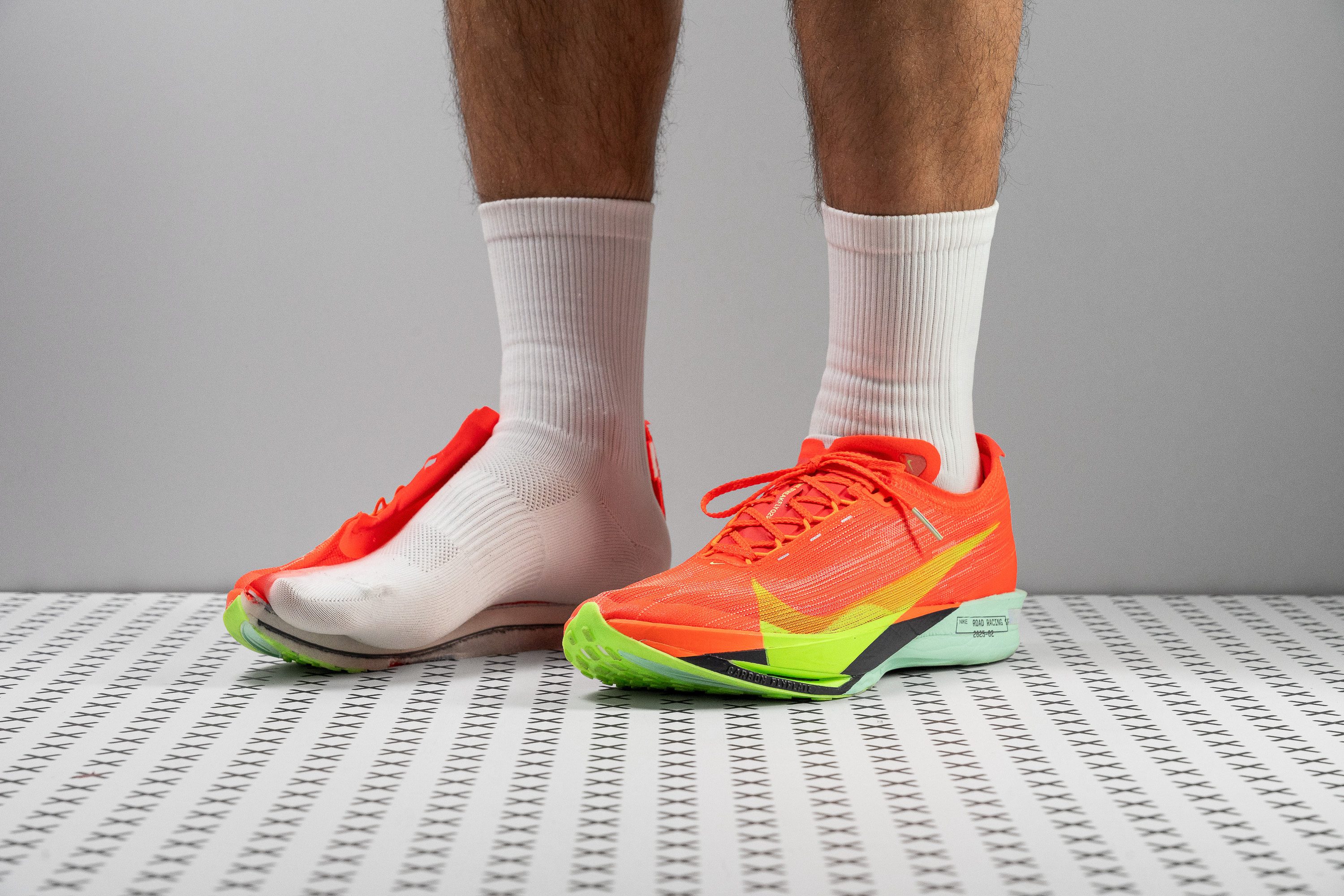
























































What makes it the best?
The snappiness we experienced in the Nike Streakfly 2 is out of this world. Further testing in the lab left us in awe of how it managed to pack so much power and grip in its lightweight package. Ultimately, it takes the crown for the best energy return among low-drop running shoes.
Streakfly 2 feels like a track shoe with its minimal cushion and low drop. Our calliper shows the stack is 27.0/23.3 mm, and the resulting heel drop is only 3.7 mm, explaining the magnified surface feedback we had. This low drop shoe offers high energy return, verified by lab tests with dominating scores of 76.3% in the heel and 77.9% in the forefoot.
Its low weight helps with running at full throttle, because it really feels like we don’t have shoes on. At 4.5 oz (128g), it’s even lighter than other running spikes!
To enhance control and tackle sharp curves with no fear, the outsole offers solid grip. With its 0.49 friction score in our traction test, it’s ready for dry and wet conditions.
However, its focus on aerodynamics makes its midsole extremely narrow. Expect a race-ready fit with its 102.2/70.8 mm dimensions.
Pros
- Feather-light build
- Ideal for 5K/10K races
- Wild, fun and fast
- Now features a carbon-fibre plate
- Much quicker than its predecessor
- Top-tier ZoomX foam
- Perfect for track workouts
- Not pricey all things considered
- Can stretch up to half marathon
- Grips well on dry and wet roads
Cons
- Not for heel strikers
- Only for short distances
- Narrow toebox
- Lacks stability
Best budget low drop running shoes
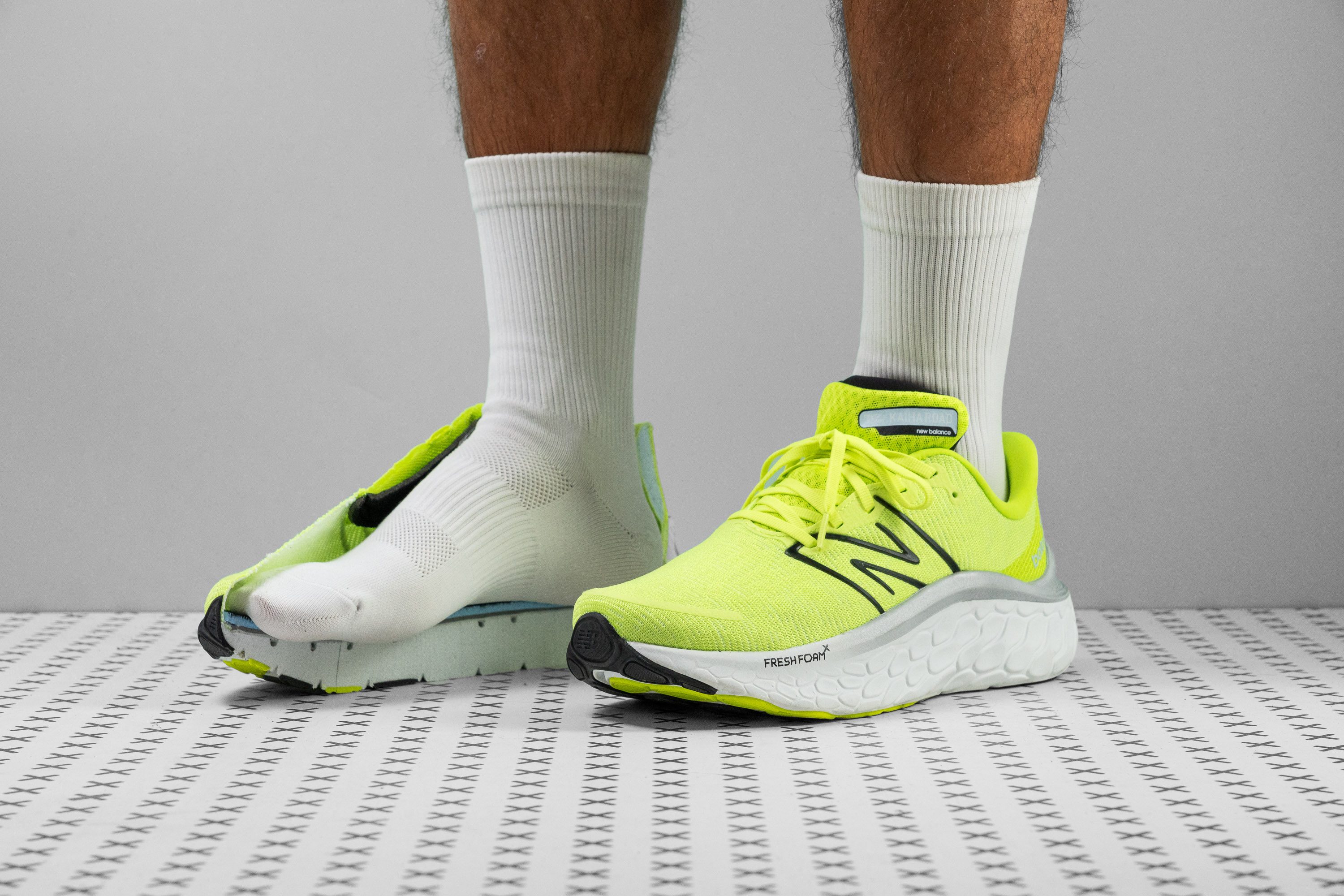











































What makes it the best?
After a series of tests in our lab, we found that the New Balance Fresh Foam X Kaiha Road is our best budget low-drop running shoe. It’s a more than capable daily trainer for its £90 price. With its focus on comfort, versatility, and ease of movement, it can match or even exceed the performance of its steeper-priced counterparts (£160 average).
Easy on the wallet and the feet, the Kaiha Road offers a natural and agile sensation through its low drop and flexible midsole. In our lab test, it emerged 9.3% more adaptive than average, boosting its versatility for other activities like walking. Meanwhile, its low 3.8 mm drop promotes a more barefoot experience and builds foot strength.
At its core is the Fresh Foam X midsole, pampering our feet with cloudlike goodness. Each landing feels gentle, followed by a springy takeoff. Our durometer confirms its softness with a low 13.3 HA reading, 36.4% below average.
However, what this shoe sacrificed is its upper’s durability. Our Dremel punctured it almost immediately, so those who prioritise a sturdy upper should try other options.
Pros
- Marshmallowy plush cushioning
- Great for recovery days
- Extremely flexible and forgiving
- Rockered midsole for smooth transitions
- Above average breathability
- Excellent performance in cold conditions
- Provides good stability
- Ideal for long runs
- Accommodating toebox
Cons
- Lacking in upper durability
- Needs some breaking in
- Needs some breaking in
Heel-to-toe drop categories
The heel-to-toe drop is the difference in height between the forefoot and the heel and it is given in millimetres. We calculate it by deducting the forefoot stack height from the heel stack height (more about that later).
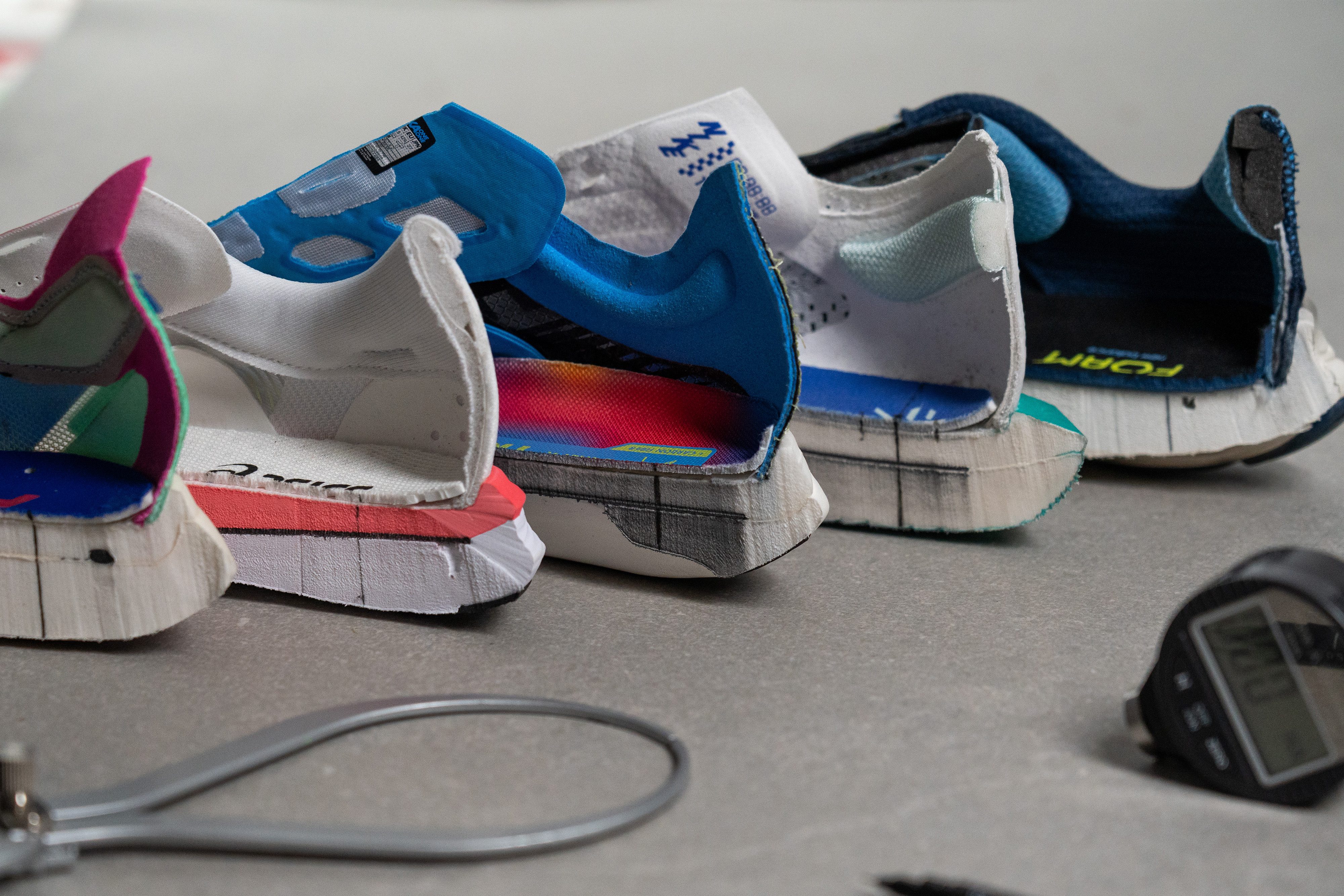
There are 4 heel drop categories:
- Zero drop (0mm),
- Low drop (1-4mm),
- Mid drop (5-8mm), and
- High drop (8+ mm).
Low-drop running shoes have a heel drop of 4mm or less, so zero-drop is included. We have covered the topic of zero-drop shoes in great detail here so we will focus on low-drop shoes now.
You MUST know this before buying low drop running shoes
The heel drop that is recommended for beginners is between 8mm and 12mm. 10mm is the non-written industry standard. The low drop, sitting between 1 and 4mm is much lower than that. And that matters because:
- We usually recommend low-drop running shoes only to forefoot/midfoot strikers.
- If you’re new to running or you are a runner but you used high-drop shoes until now, it is important to transition to the low drop gradually.
- Sudden changes in heel drop (large ones, of 4mm or bigger, either direction - lower or higher) are not recommended, especially if you’re training hard and just switch shoes to do your LSD or fartlek run.
- If you’re a heel striker, low-drop shoes might alter your strike. Because of this, it is advised to look for more cushioned low-drop shoes as you transition gradually. Plus, landing on more foam feels better than landing on less foam, at least for beginners who are not used to some ground feel.
- Low-drop shoes utilise your lower leg muscles more. This is important because it means they could aggravate your Achilles/calf/tibia muscle injuries.
|
If you want to learn much more about heel to toe drop, we recommend reading our Ultimate guide on heel to toe drop. |
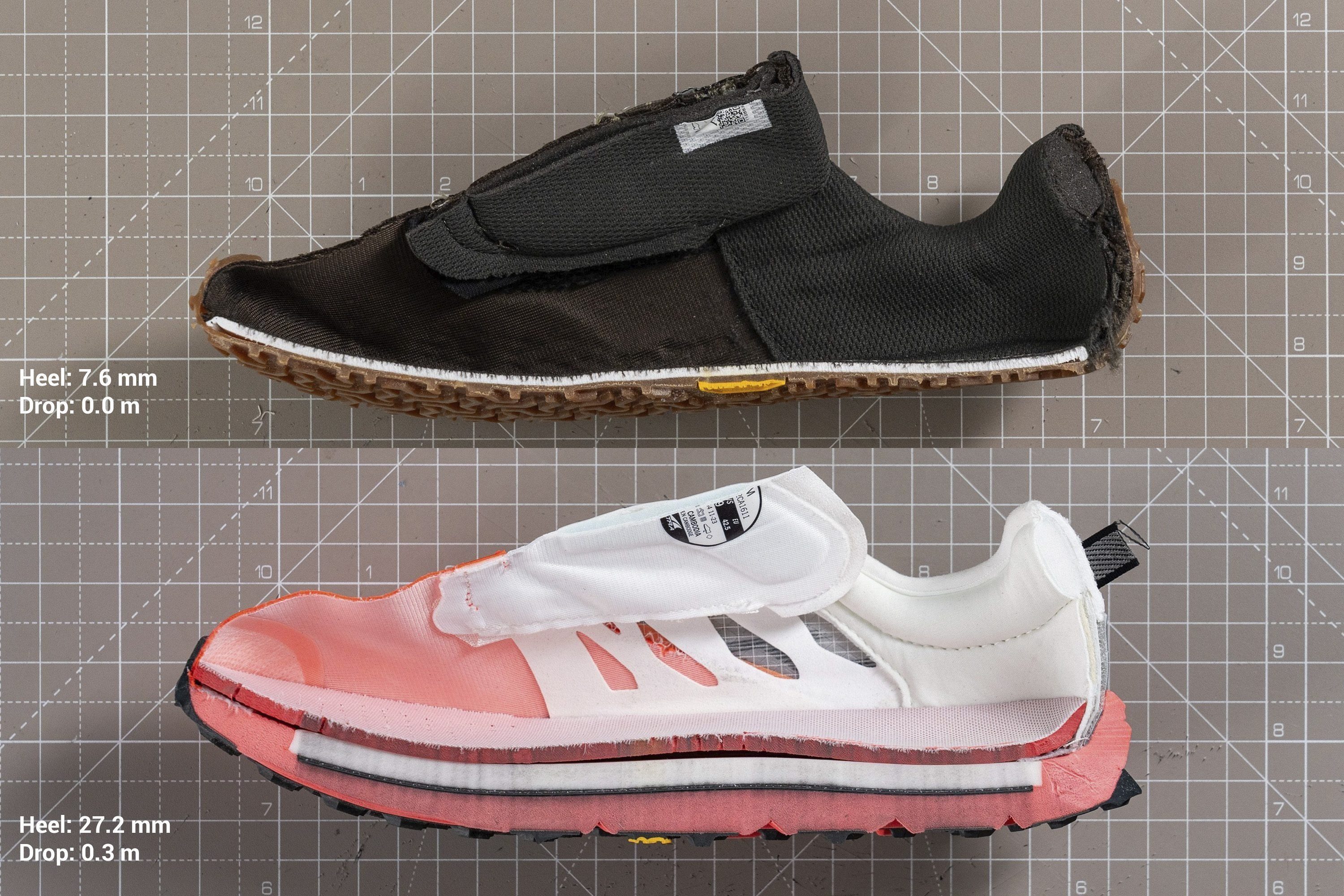
Lab data: heel drop measurements
To calculate the heel drop, we have to precisely measure the stack heights. In order to do that, we cut shoes in half: this way, we can honour the guidelines from WorldAthletics.

Heel drop = (Heel stack height) - (Forefoot stack height).
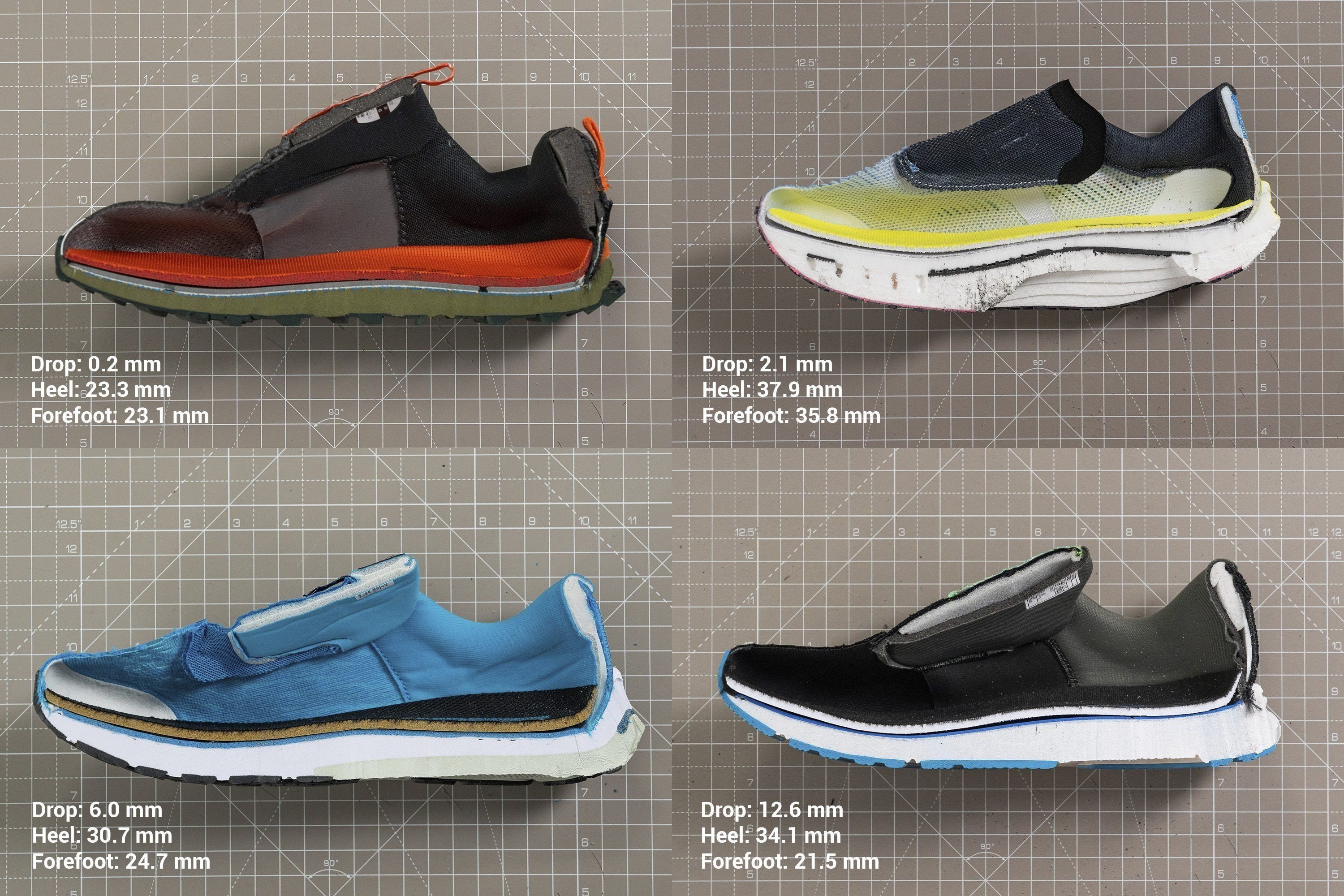
Brands advertise the wrong heel drop
To our surprise, the difference between our heel drop measurements and the numbers that brands promote is sometimes bigger than 50% or even 100%. Given how heel drop can significantly affect your running (strike, muscles, everything), knowing the correct heel drop is imperative.
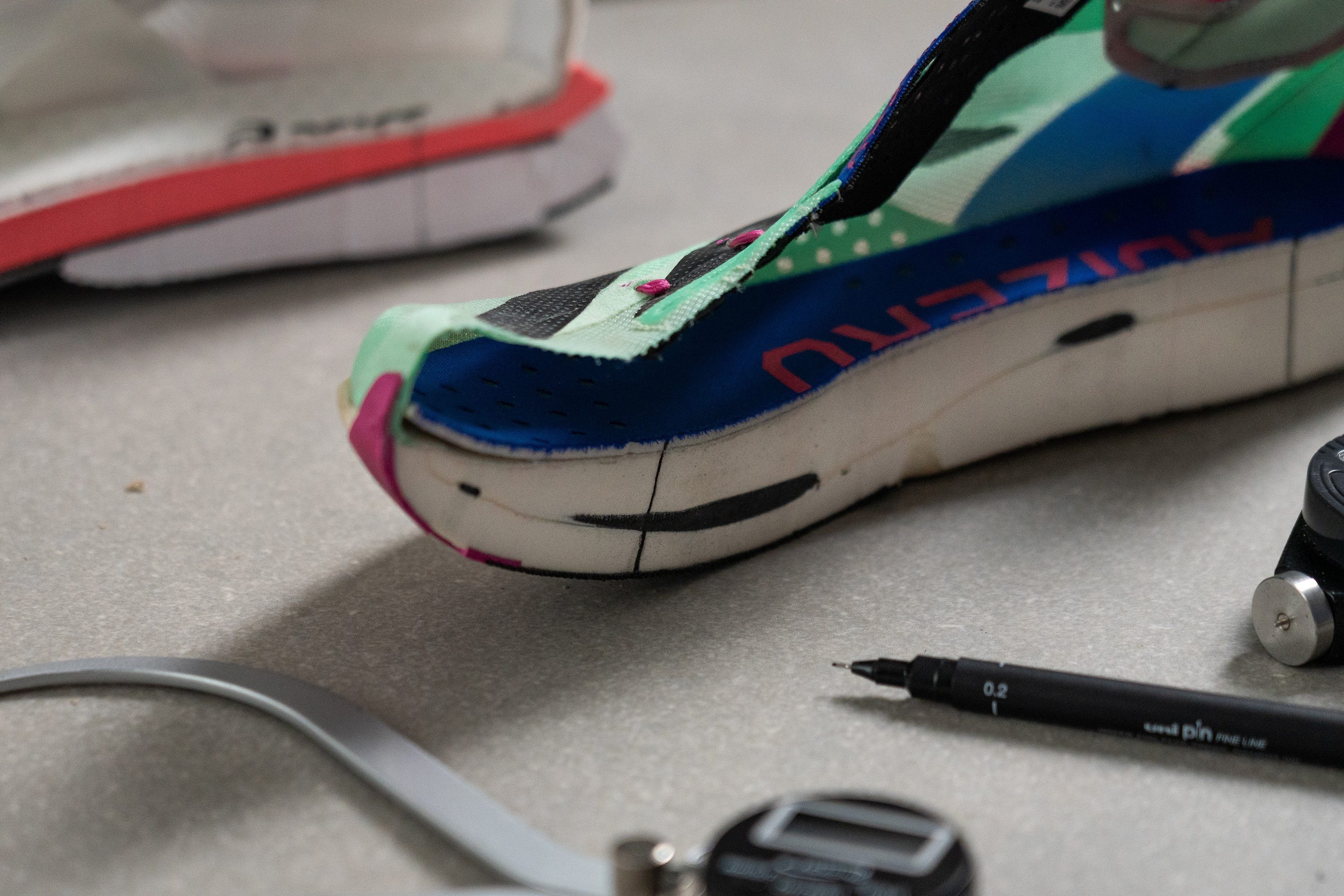
In the table below, see some of the biggest differences between the lab-measured drop and promoted numbers by the brands:
Here are examples of running shoes that are promoted as mid-drop but turned out to be low-drop:
Low-drop running shoes for trails
Trail running shoes feature lower heel drop due to the varying terrain and a higher need for stability or even ground feel.
This does not make the transition to low-drop or zero-drop shoes for trails shorter than when changing the drop on the roads.
However, when dealing with trail running shoes, we must cover the lug depth as that is the biggest indicator of the shoes’ purpose. The lugs can also significantly change the stack height.
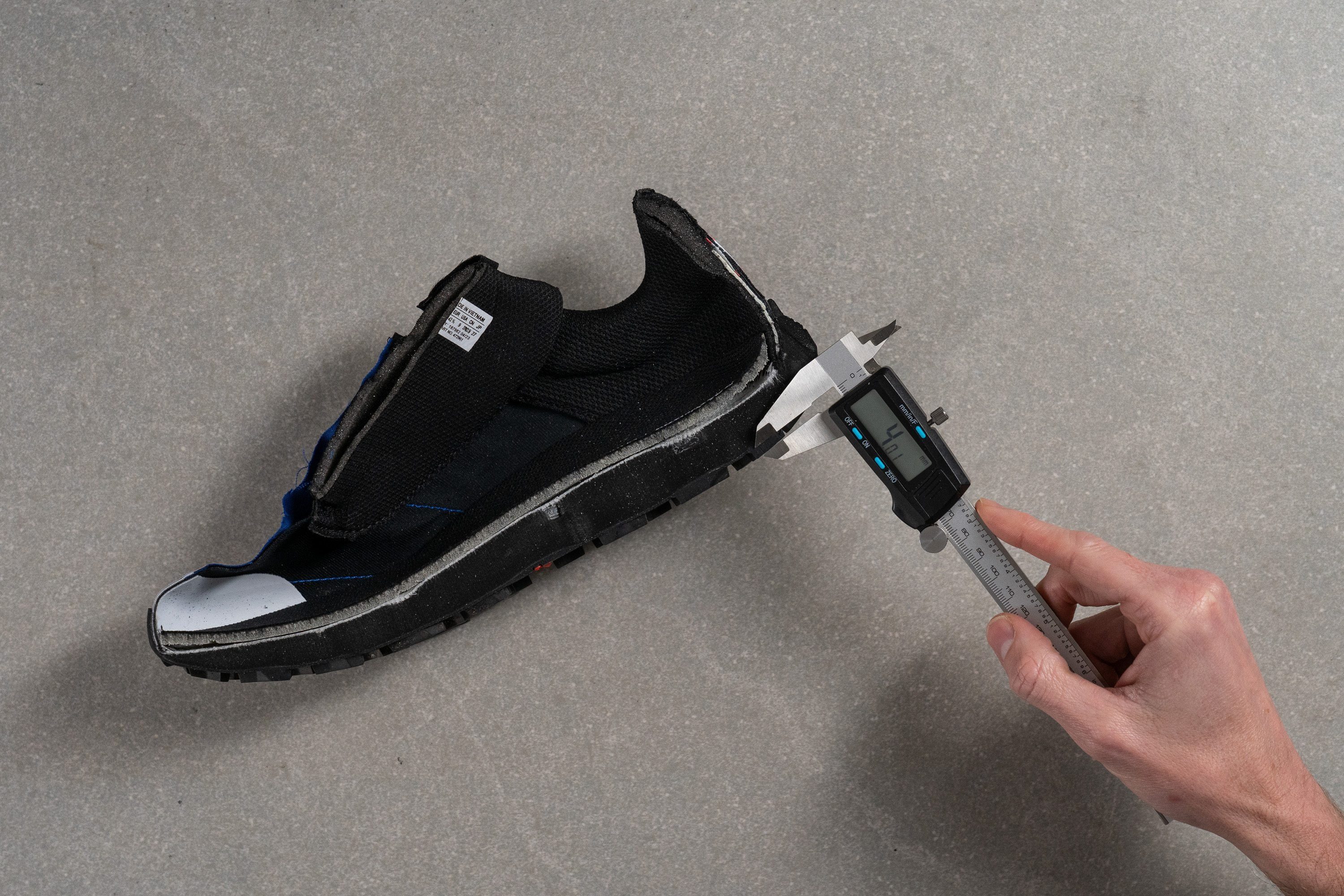
How to transition to low-drop running shoes
Gradually. There’s no recipe that works for everyone because we all have different feet, pronation, foot strike, and personal preferences. It’s always better to do it slower than faster and to slowly incorporate low-drop shoes into your current shoe rotation.
At no point while transitioning to low-drop shoes, especially zero-drop shoes, should you feel muscle strain or pain. Keep in mind that it’s easier for forefoot/midfoot strikers to transition to low-drop shoes than heel strikers and that such a process can last for months, maybe even longer.

